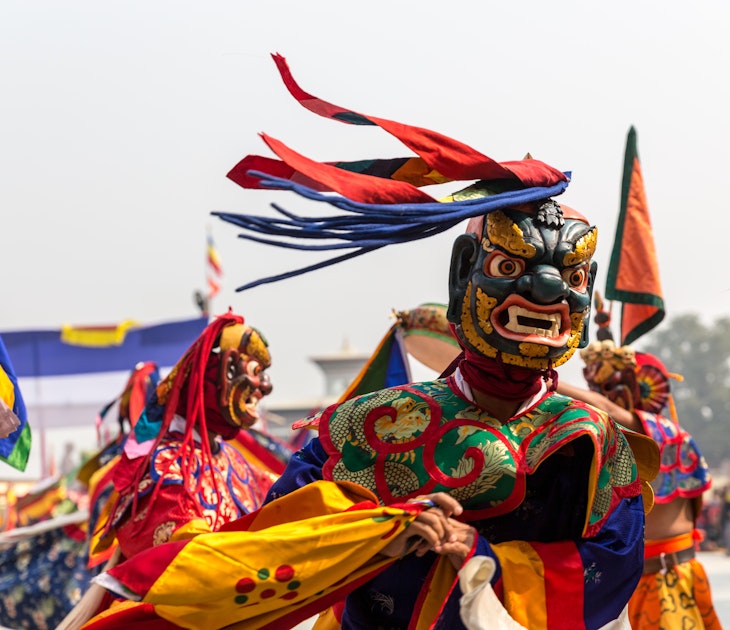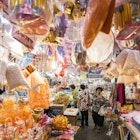

The best time to see the terraced rice fields in Yuanyang is January © Weeraporn Puttiwongrak/Shutterstock
China is a huge country and the best time to go can depend on the region you’d like to visit and what kind of holiday you’re looking for. However, if you’re just beginning to plan your trip and don’t know where to start, here are our tips on figuring out when you should go to China.
Editor's note: during COVID-19 there may be additional travel restrictions. Check the latest guidance in China before planning a trip, and always follow local government health advice.
The most useful tip is to avoid travelling during the three main national holidays (Labor Day in May, National Day in October and Chinese New Year). If you must, book well ahead of time and prepare for crowds.
High Season (May–August)
In peak summer, temperatures can get unbearably hot in the southern part of the country and it’s also the wet season so downpours aren’t uncommon. Expect big crowds at traveller hotspots, especially in July and August when Chinese school children are on their summer break. Accommodation prices peak during the first week of May holiday period; this time is best avoided for travel.
Shoulder Season (mid-February–April, September & October)
For many savvy travelers, this is the perfect time to go to China. Weather-wise, you have a more temperate climate. In the north in particular, this is the optimal season with fresh weather and clear skies. Accommodation prices can peak during the early-October holidays, another time you should try and avoid.

Low Season (November–mid-February)
The winter weather is bitterly cold in the north and at altitude. If you’re looking for warmth, you’ll have to travel to the far south. Domestic tourism is at a low ebb, but things are busy and expensive for Chinese New Year.
January
North China is in a deep freeze but the south is less bitter; preparations for the Lunar New Year get underway well in advance of the festival, which arrives any time between late January and March. The Lunar New Year is family-focused, with dining on dumplings and gift-giving of hóngbāo (red envelopes stuffed with money). Most families feast together on New Year’s Eve, then China goes on a big week-long holiday.
Key events: Spring Festival, Harbin Ice & Snow Festival
February
North China remains shockingly icy and dry, but things are slowly warming up in Hong Kong and Macau. The Lunar New Year could well be underway, but sort out any tickets well in advance.
Key events: Monlam Great Prayer Festival, Lantern Festival

March
China comes to life after a long winter, though it remains glacial at high altitudes. The mercury climbs in Hong Kong and abrasive dust storms billow into Beijing, scouring everything in their path. It's still low season but if you delve into south Chinese countryside, prepare to be bowled over by a landscape saturated in bright-yellow rapeseed.
Key events: Beijing International Literary Festival
April
Most of China is warm and it’s a good time to be on the road. The Chinese take several days off for the Qingming festival, a traditional date for honoring their ancestors and now an official holiday.
Key events: Dai New Year, Luoyang Peony Festival, Third Moon Fair, Formula 1 Chinese Grand Prix
May
Mountain regions, such as Sichuan’s Jiuzhaigou National Park, are in full bloom. For the first four days of May, China is on holiday (Labour Day). Buddha's Birthday falls on the eighth day of the fourth lunar month, usually in May. Key events: Buddha's Birthday in Xiahe, Circling the Mountain Festival, Great Wall Marathon

June
Most of China is hot and getting hotter. Once-frozen areas, such as Jilin’s Heaven Lake, are accessible – and nature springs instantly to life. The great China peak tourist season is cranking up.
Key events: Festival of Aurora Borealis, Dragon Boat Festival, Dhama Festival, Shangri-la Horse Racing Festival, Tagong Horse Festival
July
Typhoons can wreak havoc with travel itineraries down south, lashing the Guangdong and Fujian coastlines. Plenty of rain sweeps across China: the ‘plum rains’ give Shanghai a big soaking, and the grasslands of Inner Mongolia and Qinghai turn green.
Key events: Dali’s Torch Festival, Naadam, Dalian International Beer Festival
August
The temperature gauge of Yangzi's ‘three ovens’ – Chongqing, Wuhan and Nanjing – gets set to blow. Rainstorms hit Beijing, which is at peak heat, as is sweating Shanghai. So head uphill to Lushan, Moganshan, Huangshan or Guoliangcun.
Key events: Litang Horse Festival, Qingdao International Beer Festival

September
Come to Beijing and stay put – September is part of the fleetingly-lovely tiāngāo qìshuǎng (‘the sky is high and the air is fresh’) autumnal season, which is an event in itself. It's also a pleasant time to visit the rest of north China.
Key events: Tai Shan International Climbing Festival, Mid-Autumn Festival, Confucius’ Birthday
October
The first week of October can be hellish if you’re on the road: the National Day week-long holiday kicks off, so everywhere is swamped. Go mid-month instead, when everywhere is deserted.
Key events: Miao New Year, Kurban Bairam (Gǔěrbāng Jié)
November
Most of China is getting pretty cold as tourist numbers drop and holidaymakers begin to flock south for sun and the last pockets of warmth. The peak surfing season kicks off in Ri Yue Bay (Sun and Moon Bay) in Hainan.
You might also like:
Great Wall: get to know China's most iconic structure
Where to see pandas in China
China's most epic high-speed rail journeys
Explore related stories

Architecture
The ultimate guide to Tibetan Buddhist monasteries: exploring gompas in the HimalayasNov 22, 2024 • 7 min read








